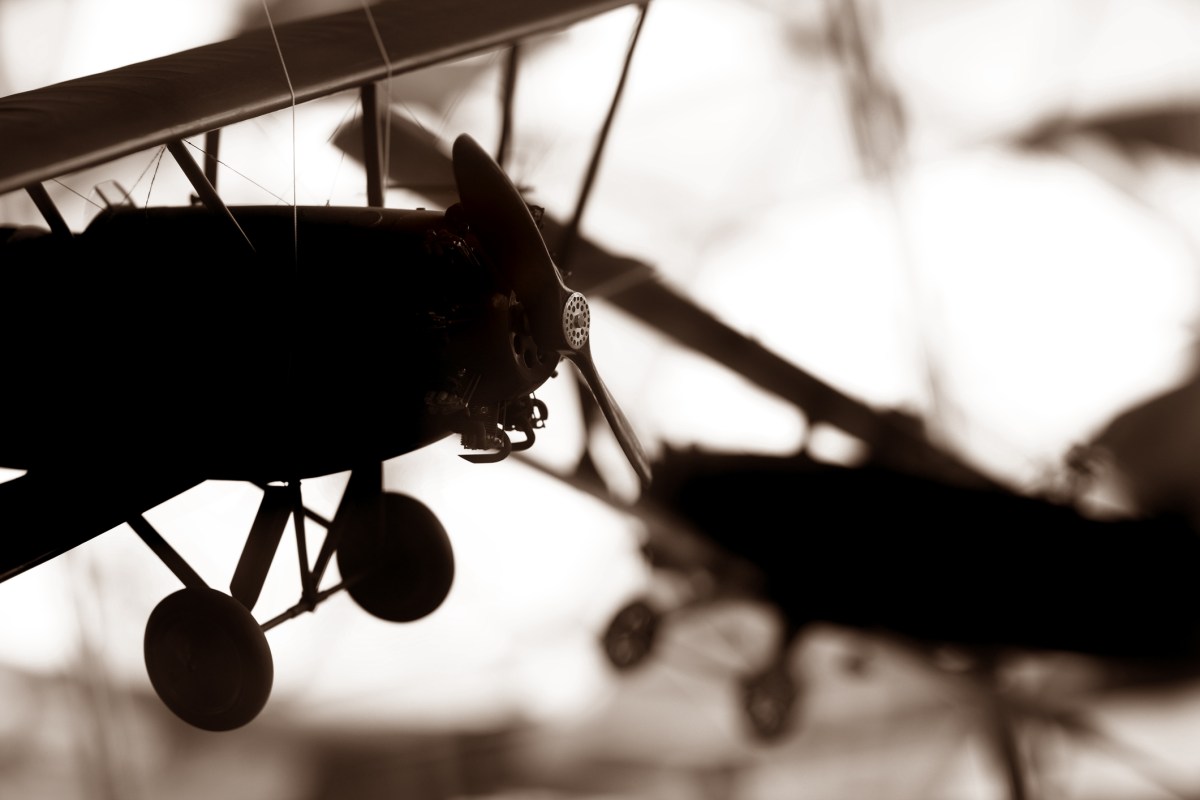After a successful reconnaissance mission over French territory, the German biplane was heading back to the safety of its own lines when a French plane appeared through the clouds and raced towards it. Well, “raced” as best it could – the max speed at the time was around 60 mph.
It was Oct. 5, 1914, at the beginning of the First World War, and air combat was in its infancy. Up until then the canvas and wood biplanes were a curious novelty useful mostly for spotting enemy positions and the occasional “bombing run” that consisted of airmen literally tossing explosives out of the cockpit by hand. Sometimes the pilot and observer would shoot at their enemy counterparts with rifles or pistols they had brought with them into the skies.
The first plane flight, after all, had only come a little more than a decade before when Orville Wright flew a few feet off the ground for a scant 59 seconds over a field in North Carolina.
But after the outbreak of the Great War, the French military soon realized there would be value in controlling the skies and became among the first to outfit their fragile biplanes with machine guns that the observer could use to engage enemy planes. Even with that advantage, however, no one had shot anyone else down in the clumsy dog fights.
The pilot of the French plane on this day 104 years ago, Sergeant Joseph Frantz, and his observer, Corporal Louis Quenault, knew that all too well. They had seen combat at least 11 times prior, according to a French military history. This fight would prove different – an “epic” aerial battle, as the caption for a 1914 lithograph put it.
Soldiers from both sides on the ground were able to watch for a quarter of an hour as the French plane chased the Germans ducking and weaving through the sky. Frantz knew from his previous fights that they had to get in close, within 10 meters at least, to be effective. The Germans were armed only with the observer’s rifle, which they used to take the occasional shot at their pursuers.
When the German biplane came in its sights, Quenault would unleash a hail of bullets from the machine gun. Then, mid-combat, the machine gun jammed.
As the Frenchman was trying to clear the breach of his weapon, the German plane suddenly and unnaturally pitched up, then collapsed to its left and dove straight down to the earth. Some of the previous shots had found their mark and struck the plane’s engine, sending it down until it slammed into a marsh, killing both German airmen.
“The enthusiasm of our troops was great after this poignant spectacle, and the two heroes were decorated,” noted the caption of the French lithograph.
The French government awarded Frantz the Legion of Honor and Quenault the Military Medal, but the achievement was more significant than either man could know at the time. Their feat introduced the world to the strategic importance and deathly seriousness of aerial combat.
Throughout the war improvements would be made to the biplanes to better suit dog fighting. (An early problem was how to forward mount a machine gun without shooting of the plane’s own propeller.)
“By the end of the war, fighter technology and air doctrine had both evolved considerable. Most of the evolutions had emerged from the crucible of combat, and without that practical experience the process might have taken a far different course – certainly it would have been slower,” reads an encyclopedic history of the First World War.
“Most important,” it continues, “military leaders of all countries involved in the conflict recognized that never again could war planning take place without considering the role, both positive and negative, of fighter aircraft.”
This article appeared in an InsideHook newsletter. Sign up for free to get more on travel, wellness, style, drinking, and culture.



















